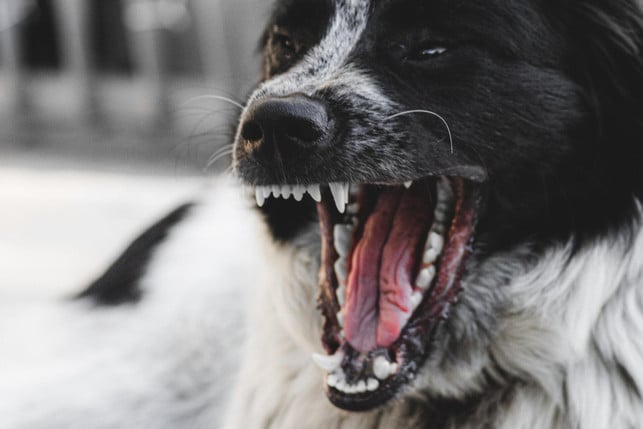
If a dog bites, this is not only painful, it can also be dangerous. You can find out what you should do with a dog bite here.
A dog bite, whether from your own or from a foreign dog, is a delicate matter. Even with small bites, it may not be done with some disinfection and a bandage. Even if it is often dismissed as harmless, since it comes from his own dog and is not very deep, going to the doctor’s office can be necessary and sensible.
We explain to you what you should do in a dog bite and when it makes sense to get medical advice.
How dog bites can occur

As a rule, dogs do not bite out of malice. Causes of dog bites can be varied – sometimes the victim also has complicity because the dog felt provoked, for example. Here are some reasons that, according to the dog magazine Rover, lead to biting dogs:
-
Fear or nervousness
- pain
- Greed
- Prey
- Mother instinct
It is important that dogs are trained from an early age so that there is no bite. But even despite the best training session, a dog with certain stressful situations can be overwhelmed and bite out of one of the above reasons.
Recognize aggressive behavior in the dog

Dog bites often precede aggressive behavior. To interpret the dog’s behavior correctly can help to avoid dog bites.
According to Rover, the following signs in particular indicate a bite risk:
- earned ears
- The white of the eyes is visible
- Growl
- Gladed teeth
- Extended pupils
- Licking the lips
- Lowly placed or pulled out tail
- tray
- yawning
- frowning
- stiff posture
- Drool
- Faster or flat breath
- pant
- Crouch
- Tremble
If you want to learn more about the body language of dogs, you could also be interested in this article: dog language: 5 important signals and what they mean.
What to do after a dog bite?

What to do after a dog bite requires primarily timely action. If you or someone else have been bitten by your or a foreign dog, according to Rover, you should best proceed as follows:
-
Remove yourself or the victim of the dog. Climb over a fence or on a tree if necessary.
-
Clean the wound. The best way to use water and mild soap.
- Disinfice the wound.
-
Cover the wound. You can cover small wounds with a sterile wound association.
If the victim is seriously injured and/or does not stop bleeding the wound, you should call an ambulance and the person should be examined in the hospital.
In small bite wounds, the walk to the doctor’s office often seems unnecessary, but you should also have small bites examined by a doctor.
When does medical help make sense?

The mouth and saliva of a dog are anything but hygienic. Therefore, bite wounds of dogs can quickly ignite and lead to infections. In severe cases, tetanus or rabies can occur after a dog bite. Therefore, it is best to always have the wound examined after a dog bite – preferably on the same day.
Take your vaccination card into practice so that all relevant vaccinations can be checked and, if necessary, made up for. This includes vaccination against tetanus. Especially if you were bitten by a dog abroad, possibly even a street dog, the risk of rabies infection can also be higher. In all cases, early medical assessment can help to assess the risk and, if necessary, to initiate treatment measures that can be life -saving.
If the medical examination is not possible, you should definitely keep an eye on the wound and pay attention to signs of inflammation or infection. According to the AOK, this includes, for example:
- Redness
- Swelling
- Wound wound
- pus
- throbbing pain
- Discomfort and/or fever
At the latest if you notice one or more of these symptoms, you should definitely use medical help.
What about cat bites?

60 to 80 percent of all bite injuries are caused by dogs. But cats can also bite a lot. Although the injuries that arise are often smaller, you should also have an apparently harmless cat bite examined by a doctor.
According to the AOK, the risk of infection in a cat bite is even higher than with a dog bite, because the fine, sharp teeth of the cat can penetrate deeper into the tissue than dog teeth. Bacteria and germs get deeper into the wound and the risk of infection increases – even if the bite wound often looks harmless.
If you want to be on the safe side at animal bisses, you should always be on medical treatment – no matter how small or harmless the bite tracks may also look.
Read more on utopia.de:
- Dog passage license: What is it good for?
- Pets for children: You should consider that beforehand
- Barfen for dog and cat: risks, tips – and sustainable alternatives
** marked with ** or orange underlined Links to sources of supply are partially partner links: If you buy here, you will actively support Techzle\.com, because we will then receive a small part of the sales proceeds. More information.